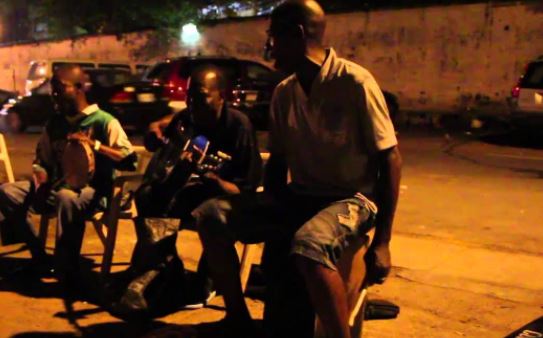Konkoma, a variety of highlife music, died in the 1950s due to the rise of highlife dance and guitar bands — but some of the forms of music it influenced remain alive.
According to John Collins, author of ‘Highlife Giants: West African Dance Band Pioneers’, one of such genres is Nigeria’s agidigbo music which was pioneered by Adeolu Akinsanya and Haruna Ishola, Yoruba musicians.
In his book published in 2016 by Cassava Republic, Collins writes that the late Segun Bucknor said agidigbo music employed elements of konkoma in its formative days.
He quoted Bucknor as saying: “By the early thirties you had informal dance steps like konkoma. This was not like the dance bands but was what you would now call highlife, but without the guitar.
“During weekends, labourers or carpenters would form a group to play at naming ceremonies for some few drinks, and a couple of pounds… this dance step was later called agidigbo, as it took its name from a Nigerian box instrument with five strings.”
Collins further noted that Akinsanya, who was influenced by the konkoma highlife, formed his Lagos-based band, ‘Rancho Boys and Rio Lindo Orchestra’, between the late 1940s and early ’50s.
What is konkoma?
Collins said konkoma became a Ghanaian craze in the 1930s and 1940s.
Described as a “poor man’s version of adaha brass band music”, it surfaced in villages where people could not afford the expensive, imported brass band instruments.
Konkoma was said to have been created by school drop-outs and ruffian boys.
Collins writes: “KN Bame and AM Okpoku, who were schoolboy members of the Kpandu town’s kokonma group in the late 1930s and early 1940s, told me that the members usually marched to the performance venue, but then formed a semicircle for the dancers to perform either feestyule or in drill-like formation.”
He said the word kokonma “is part of the Akan expression ‘me twa konkoma ma bo fum’ (I cut konkoma and I fall down), which was used when the dancers purposely bumped into each other and tried to knock one another down”.
Due to its marches and ranks of uniformed men, the British used konkoma to recruit Ghanaians into the British Army during the Second World War.
What is agidigbo?
Agidigbo — according to Dabi Debo Kanyinsola, a renowned talking drummer — is a wooden box with metal tongues,played by plucking the metal with fingers and simultaneously tapping the sides of the box to harmonise the rhythm.
The agidigbo player wears a thick ring on his thumb, which he uses to tap the sides of the wooden box.
The lyrics sung by the musicians are largely folkloric.
In the 1970s, agidigbo music used to attract crowds, who would sit and drink palm wine, in the evenings.
A modern take on agidigbo music was captured in this video posted on YouTube by Africana Digital Ethnography Project.
Kanyinsola also renders his version of agidigbo in this video.
Despite its waning popularity, the music genre still thrives through the annual Agidigbo Musical Festival in Badagry, Lagos.
According to Samuel Dagbeyon, organiser of the event, “the history of contemporary music and entertainment in Badagry can be traced back to the late 80s when brass band was popular and the Agidigbo music festival was celebrated to showcase that.
“Agidigbo music is unique as it has its own instrument which is used to play it, and it is complemented with trumpets and side drums which makes the end product sound great”.
Copyright 2024 TheCable. All rights reserved. This material, and other digital content on this website, may not be reproduced, published, broadcast, rewritten or redistributed in whole or in part without prior express written permission from TheCable.
Follow us on twitter @Thecablestyle

